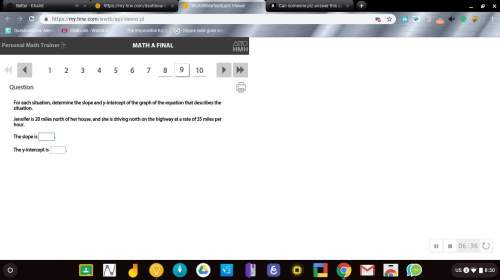
Mathematics, 28.06.2020 19:01 giajramosp2r5da
Read the proof. Given: AB ∥ DE Prove: △ACB ~ △DCE Triangle A B C is shown. Line D E is drawn inside of the triangle and is parallel to side A B. The line forms triangle D C E. We are given AB ∥ DE. Because the lines are parallel and segment CB crosses both lines, we can consider segment CB a transversal of the parallel lines. Angles CED and CBA are corresponding angles of transversal CB and are therefore congruent, so ∠CED ≅ ∠CBA. We can state ∠C ≅ ∠C using the reflexive property. Therefore, △ACB ~ △DCE by the AA similarity theorem. SSS similarity theorem. AAS similarity theorem. ASA similarity theorem.

Answers: 1


Another question on Mathematics

Mathematics, 21.06.2019 12:30
Which facts are true for the graph of the function below? check all that apply. f(x) = log8 x. (30 points pls )
Answers: 2

Mathematics, 21.06.2019 13:00
Determine the quotient and remainder when (6a3)+11a2-4a-9) is divided by (3a-2) express your answer in the form q(a) + r(a)/d(a)
Answers: 2

Mathematics, 21.06.2019 19:30
Factor the expression using the gcf. the expression 21m−49n factored using the gcf
Answers: 2

Mathematics, 21.06.2019 23:30
In a study of the relationship between socio-economic class and unethical behavior, 129 university of california undergraduates at berkeley were asked to identify themselves as having low or high social-class by comparing themselves to others with the most (least) money, most (least) education, and most (least) respected jobs. they were also presented with a jar of individually wrapped candies and informed that the candies were for children in a nearby laboratory, but that they could take some if they wanted. after completing some unrelated tasks, participants reported the number of candies they had taken. it was found that those who were identiď¬ed as upper-class took more candy than others. in this study, identify: (a) the cases, (b) the variables and their types, (c) the main research question, (d) identify the population of interest and the sample in this study, and (e) comment on whether or not the results of the study can be generalized to the population, and if the ď¬ndings of the study can be used to establish causal relationships.
Answers: 2
You know the right answer?
Read the proof. Given: AB ∥ DE Prove: △ACB ~ △DCE Triangle A B C is shown. Line D E is drawn inside...
Questions

History, 03.05.2020 13:39



Mathematics, 03.05.2020 13:39

Business, 03.05.2020 13:39



English, 03.05.2020 13:39


Mathematics, 03.05.2020 13:39

Mathematics, 03.05.2020 13:39




Mathematics, 03.05.2020 13:39

History, 03.05.2020 13:39

English, 03.05.2020 13:39

Biology, 03.05.2020 13:39

Mathematics, 03.05.2020 13:39

Mathematics, 03.05.2020 13:39






